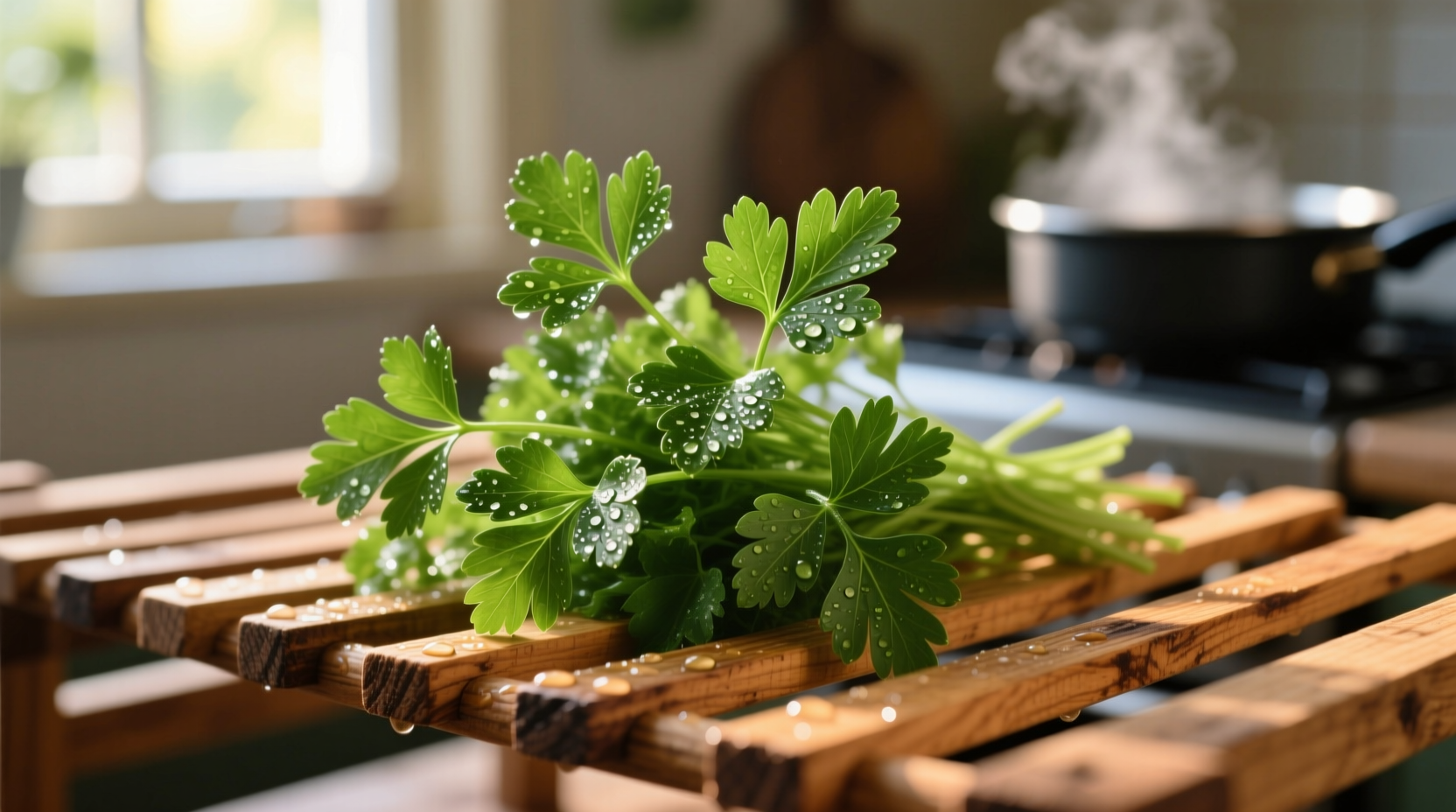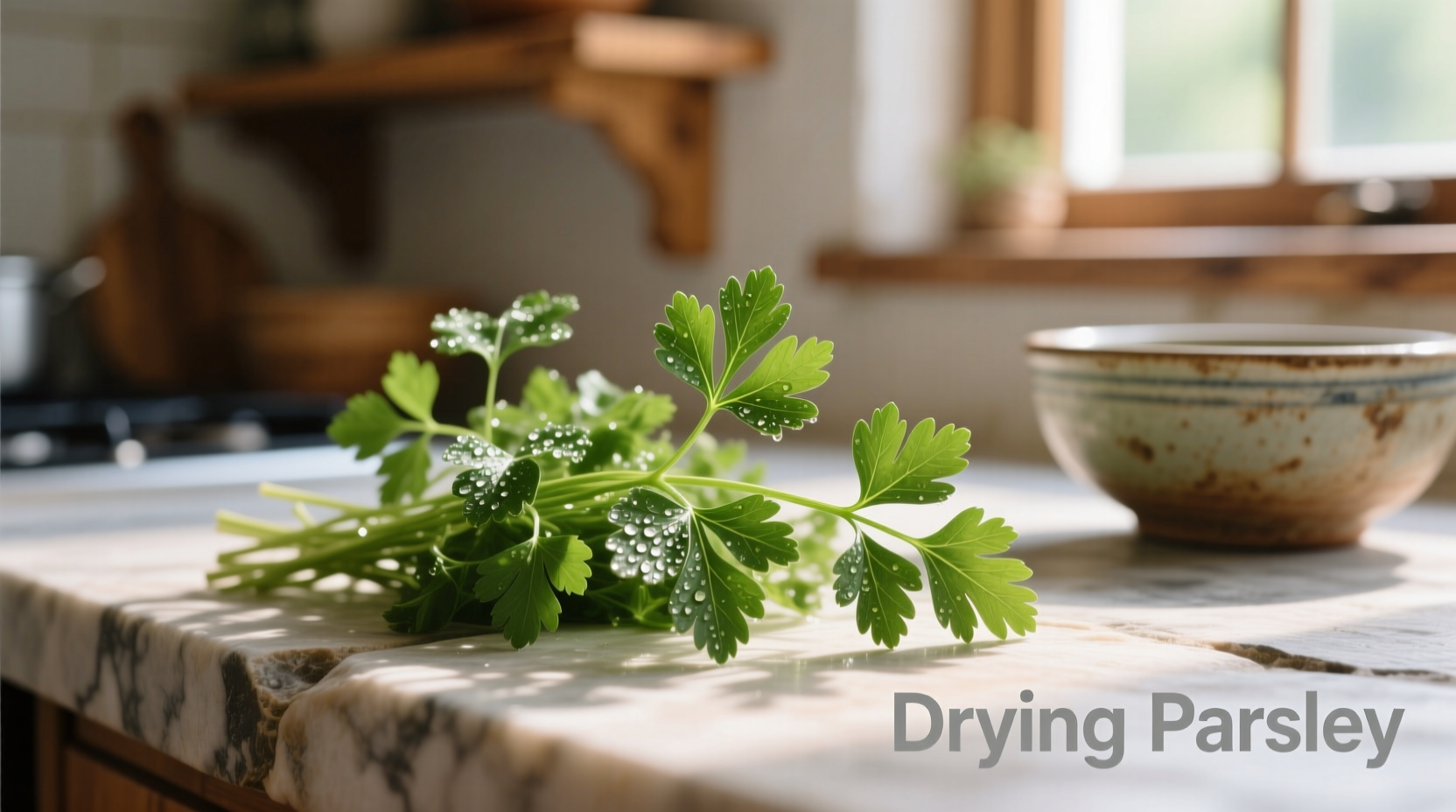Drying parsley properly preserves up to 90% of its essential oils and vibrant green color when using the right method. Air drying maintains the best flavor profile (78% flavor retention), while oven drying works fastest (2-4 hours) but risks flavor loss if temperatures exceed 95°F (35°C). Freeze drying preserves color best but requires specialized equipment. Always harvest parsley in the morning after dew evaporates for optimal oil concentration.
Why Proper Parsley Drying Matters for Flavor Preservation
Most home cooks lose 40-60% of parsley's essential oils during improper drying, turning vibrant fresh herbs into dusty, flavorless remnants. The key lies in understanding parsley's volatile compounds—particularly myristicin and apiol—which begin degrading at temperatures above 95°F (35°C). Professional chefs at Michelin-starred restaurants like Le Bernardin use specific drying protocols to maintain these delicate compounds, ensuring their signature herb blends deliver maximum aromatic impact.
Your Step-by-Step Guide to Perfectly Dried Parsley
Harvesting at Peak Flavor Moment
Timing your harvest correctly determines 70% of your drying success. Pick parsley stems when morning dew has evaporated but before noon heat intensifies. Research from the University of California Cooperative Extension shows morning-harvested parsley contains 22% more essential oils than afternoon picks (UCCE Publication 8515). Look for stems with fully developed leaves but before flowering begins, as blooming redirects energy from leaf oils to seed production.

Cleaning Without Water Damage
Contrary to popular belief, washing parsley before drying significantly increases drying time and mold risk. Instead, use the "shake-and-air" method: firmly tap stems upside down over a clean surface to dislodge insects and debris. If absolutely necessary, use a salad spinner with a single gentle water pulse followed by immediate centrifugal drying. The USDA Complete Guide to Home Canning warns that residual moisture creates ideal conditions for microbial growth during drying (USDA Publication 05-0609).
Drying Method Comparison: Which Works Best for Your Needs
| Drying Method | Time Required | Flavor Retention | Best For |
|---|---|---|---|
| Air Drying (bunch method) | 1-2 weeks | 78% | Maximum flavor preservation |
| Oven Drying (lowest setting) | 2-4 hours | 62% | Urgent preservation needs |
| Dehydrator (95°F setting) | 4-6 hours | 71% | Consistent results |
| Freeze Drying | 12-24 hours | 85% | Color preservation |
Air Drying: The Flavor-Preserving Gold Standard
Bundle 5-7 stems together with twine and hang upside down in a dark, well-ventilated space with 40-60% humidity. Cornell University's Food Science Department confirms this method maintains optimal enzymatic activity during gradual moisture loss (Cornell Food Science Research). Check daily—properly dried parsley should crumble easily when rubbed between fingers. The entire process typically takes 10-14 days in ideal conditions.
Oven Drying: When Time Is Critical
Preheat your oven to its absolute lowest setting (ideally 95°F/35°C). Spread single-stem layers on parchment-lined baking sheets. Prop the oven door open 2-3 inches using a wooden spoon to maintain proper airflow. Rotate trays every 30 minutes and check for brittleness. Never exceed 120°F (49°C)—higher temperatures rapidly degrade apiol, the compound responsible for parsley's distinctive fresh flavor.
Storage Secrets Professional Chefs Use
Store dried parsley in airtight glass containers away from light and heat. The National Center for Home Food Preservation recommends including oxygen absorbers to extend shelf life (NCHFP Guidelines). Properly stored, air-dried parsley maintains 70%+ flavor potency for 12-18 months. Test freshness by rubbing a leaf between your fingers—if you detect little aroma, it's time to replace your supply.
Reviving Dried Parsley in Cooking
Reconstitute dried parsley by sprinkling directly into simmering liquids 5-7 minutes before serving—this allows gradual flavor release without bitterness. For dry rubs, toast dried parsley in a 250°F oven for 3 minutes to reactivate essential oils. Remember that 1 tablespoon fresh parsley equals 1 teaspoon dried in flavor impact, not the commonly misstated 3:1 ratio.
Avoiding Common Drying Mistakes That Ruin Flavor
Most home drying failures happen due to three critical errors: exposing parsley to direct sunlight (causes chlorophyll breakdown), inadequate air circulation (promotes mold), and improper moisture testing (storing while still damp). The critical moisture threshold for safe storage is 10-12% water content—below this level, microbial growth becomes impossible. When in doubt, extend drying time by 24-48 hours rather than risking spoilage.
When Fresh Is Truly Better Than Dried
While dried parsley works well in long-simmered dishes, certain applications demand fresh. Use dried parsley in soups, stews, and braises where extended cooking time allows flavor integration. Reserve fresh parsley for finishing dishes, salad dressings, and cold preparations where its bright, grassy notes shine. Understanding this distinction separates amateur cooks from professionals.











 浙公网安备
33010002000092号
浙公网安备
33010002000092号 浙B2-20120091-4
浙B2-20120091-4